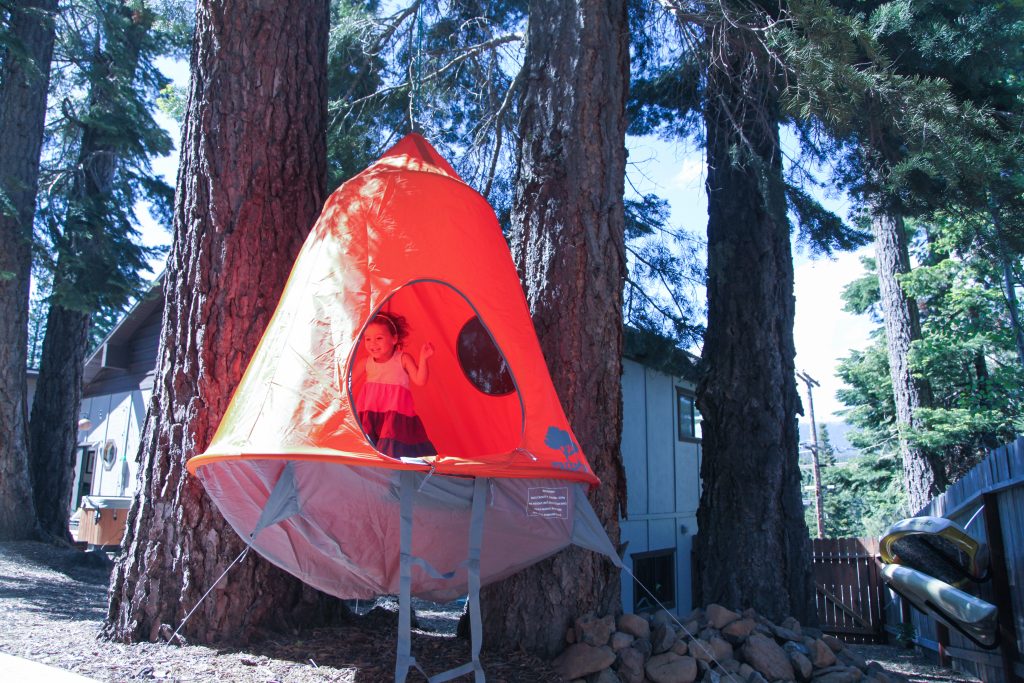Above-the-ground tents—treehouse tents, rooftop tents and tricked-out hammocks—may be camping’s latest trend, but they’re also more practical than you think.
My daughter, Nora, spotted the treehouse from across the field. We were camping on California’s Sonoma Coast and the treehouse, a weathered wooden platform about the size of a two-person tent, sat perched in a giant oak not far from our campsite. “Treehouse!” she exclaimed, as she sprinted toward it. Within minutes, my rambunctious almost-3-year-old was climbing the rickety wooden ladder as I watched nervously from below. From the top of her new tree-dwelling castle, she announced, “I want a treehouse.”

So, a week later, my husband strung a rope between two pine trees in our backyard, then attached a bright orange, kid-sized tent that hovered a couple of feet off the ground. Instant treehouse. No hammer and nails. No splintering wood. No shaky ladders. Nora loved it, and she now spends a good stretch of each day bouncing, reading, snacking and lounging in her new fortress. Once, I thought she might even take a nap in there.
What is this mysterious treehouse that pops up in minutes? It’s called a TreePod, a small, teardrop-shaped tent made from sturdy, water-resistant nylon that hangs from a strong tree branch. It has a zip-up doorway to create a cocoon-like effect and two mesh-lined windows for peeking out at the world. It costs $300 and can be assembled in less than 30 minutes.
The TreePod is just one example of a new and growing market of so-called suspension tents—hanging, above-the-ground shelters like hammocks, car-rooftop-tents and tree tents. The coolest part? Campers around the country are discovering that these airborne tents aren’t just for novelty or fun. They also have a genuine purpose and surprising benefits over standard, down-in-the-dirt tents.
These creative, pop-up tents are more than just fun-looking—they also solve common camping dilemmas.
The TreePod is the invention of a guy named Ricardo…





